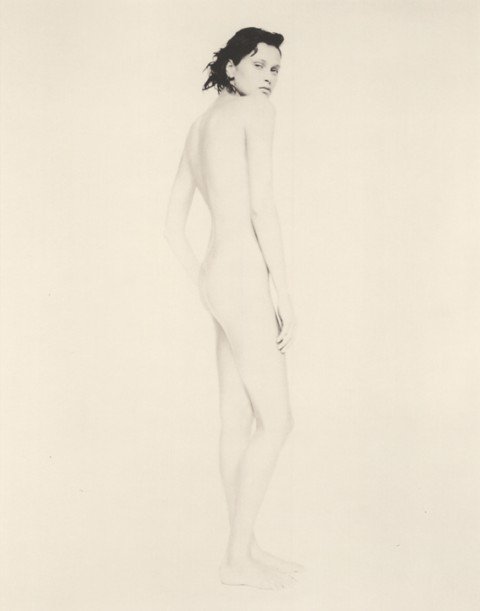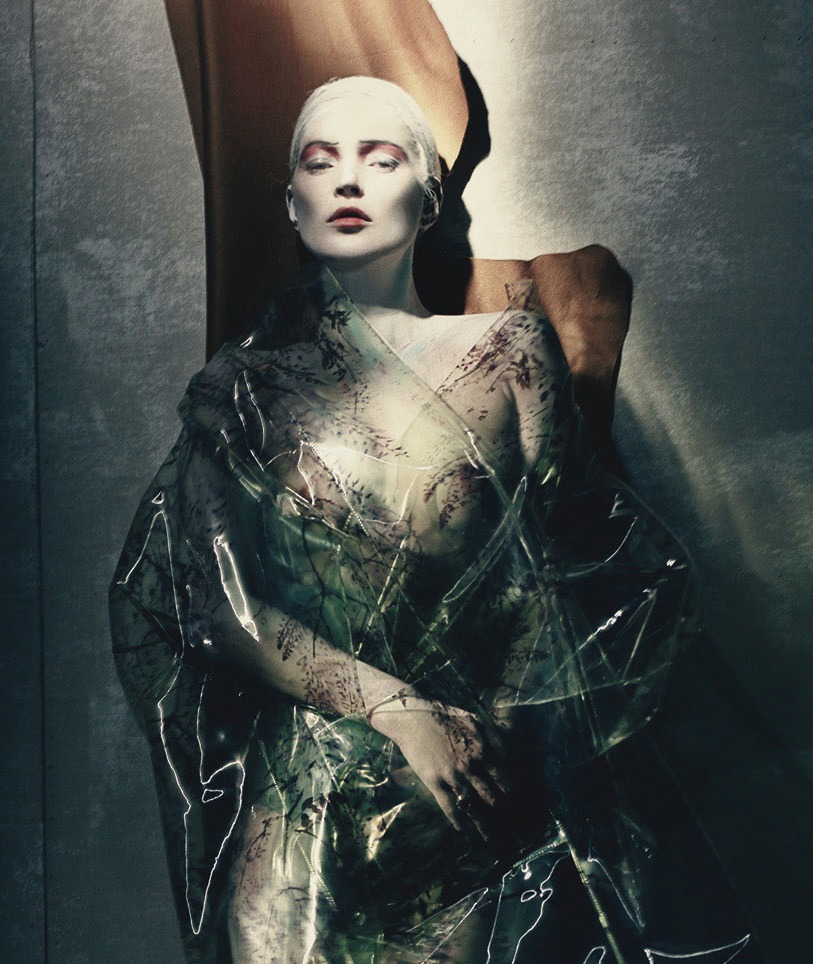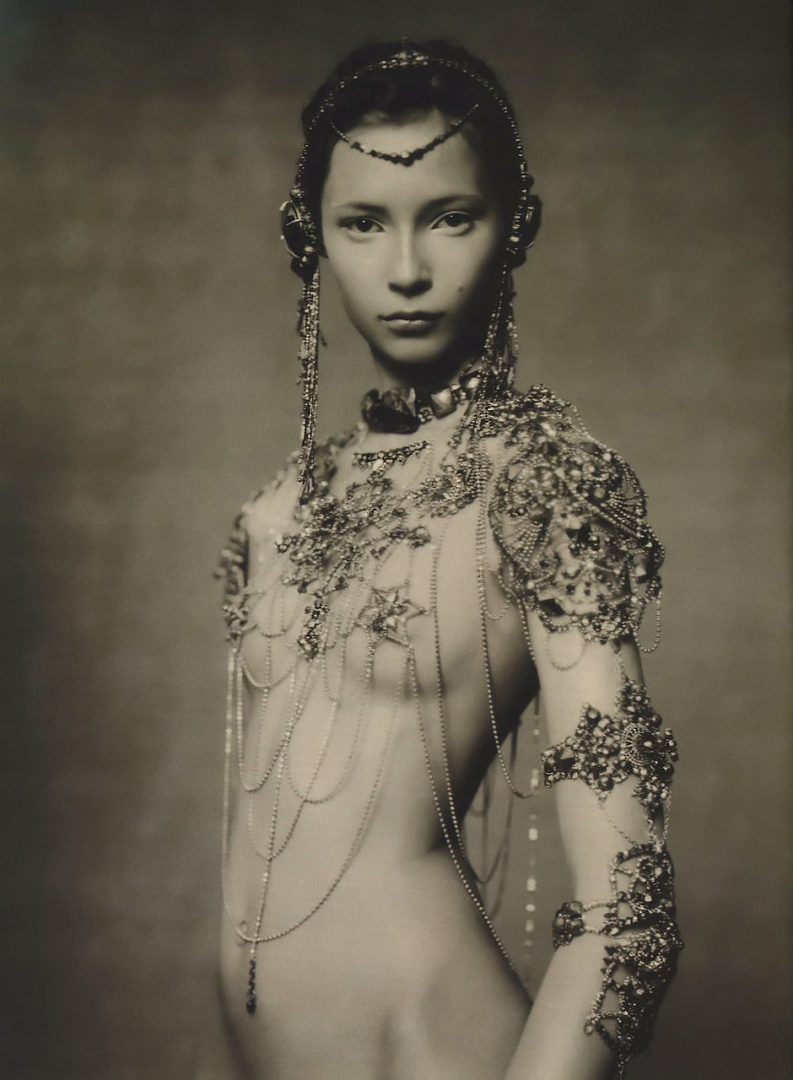Paolo Roversi – Portraiture

I put Paolo Roversi in the Art Photographers category for a reason. I’ve never heard him refer to himself as a “Fashion Photographer”, despite that most people think of him that way.
Paolo Roversi is an amazing talent, but he continues to be a low key enigma to many. His style and technique is unique and has no equal. His large format, (8×10), affinity puts him in a league all his own, especially in a digital age. Even when he started, (before digital), it was rare to do potraiture or fashion in anything other than 35mm or medium format, which always made him the odd man out.
Paolo Roversi – The Early Years
Born in Ravenna in 1947, Paolo Roversi’s interest in photography was kindled as a teenager during a family vacation in Spain in 1964. Back home, he set up a darkroom in a convenient cellar with another keen amateur, the local postman Battista Minguzzi, and began developing and printing his own black & white work. The encounter with a local professional photographer Nevio Natali was very important: in Nevio’s studio, Roversi spent many hours realising an important apprenticeship as well as a strong durable friendship.
In 1970, he started collaborating with the Associated Press: on his first assignment, AP sent Roversi to cover Ezra Pound’s funeral in Venice. During the same year, Roversi opened, with his friend Giancarlo Gramantieri his first portrait studio, located in Ravenna, via Cavour, 58, photographing local celebrities and their families. In 1971, he met by chance in Ravenna, Peter Knapp, the legendary Art Director of Elle magazine. At Knapp’s invitation, Roversi visited Paris in November 1973 and has never left.
Paris Calls
In Paris, Roversi started working as a reporter for the Huppert Agency but little by little, through his friends, he began to approach fashion photography. The photographers who really interested him then were reporters. At that moment he didn’t know much about fashion or fashion photography. Only later, he discovered the work of Richard Avedon, Irving Penn, Helmut Newton, Guy Bourdin, and many others.

Paolo Roversi shoots some of the most elegant photography in the fashion industry. His measured, classical style is made magical by his skill at manipulating light. His haunting, unguarded shots consistently strip away the facade of his subjects and draw out their raw selves, offseting fashion’s tendency to conceal and recast.
These days, Roversi’s commercial clients include Yamamoto , Comme des Garçons, Christian Dior and many others. He has shot for i-D Magazine, W Magazine, Vanity Fair, most of the Vogues, and many others.
The Start
Roversi’s interest in photography was sparked as a teenager during a family vacation in Spain in 1964. Once home he set up a darkroom in his cellar with the help of the local postman Battista Minguzzi. Roversi soon apprenticed himself to a local photographer in order to hone his craft further.
In 1970 Roversi opened his first portrait studio photographing local celebrities and their families with his friend Giancarlo Gramantieri. In 1971 he met Peter Knapp, the Art Director of Elle magazine, by chance, in Ravenna. At Knapp’s invitation, Roversi visited Paris in November 1973 and has never left.
Assisting
The British photographer Lawrence Sackmann took Roversi on as his assistant in 1974. Roversi has commented that, “Sackmann was very difficult. Most assistants only lasted a week before running away. But he taught me everything I needed to know in order to become a professional photographer. Sackmann taught me creativity. He was always trying new things even if he did always use the same camera and flash set-up. He was almost military-like in his approach to preparation for a shoot. But he always used to say ‘your tripod and your camera must be well-fixed but your eyes and mind should be free’.” Roversi endured Sackmann for nine months before starting on his own with small jobs for magazines such as Elle and Depeche Mode; his first big break came when Marie Claire published his first major fashion story.
The Roversi Technique:

“My photography is more subtraction than addition. I always try to take off things. We all have a sort of mask of expression. You say goodbye, you smile, you are scared. I try to take all these masks away and little by little subtract until you have something pure left. A kind of abandon, a kind of absence. It looks like an absence, but in fact when there is this emptiness I think the interior beauty comes out. This is my technique.”
Fashion Portraits
“Portraits are what interest me the most in photography. I am a portrait photographer. I treat fashion photography like a portraitist….It is the atmosphere and the mood of a portrait which brings clothes to life,” explained the photographer Paolo Roversi in an interview for Vogue Paris, February 2003. A partner on the Nouvelle Vague (New Wave) editorial in the June/July 2015 issue of Vogue ParisToday, the artist has built a remarkable career in photography.

He is known for shooting with 8×10 Polaroid film, and claimed to buy as much as he could find before it was discontinued. I would venture to guess he has some of the last 8×10 sheets of Polaroid on the planet. Shooting with everything from medium format up to 8×10, Paolo Roversi is the consummate artist. Find 8×10 Camera or Hasselblad 500 C/M


He shot the last of his polaroid.
He shoots Phase One/Haselblad V, has been for a while now.
And so does Albert Watson, ( https://anatomyfilms.com/albert-watson-horseman-years/ ), Peter Lindbergh, ( https://anatomyfilms.com/peter-lindbergh-no-retouching-please/ ), and others. Some stay analog,…some don’t,…some do both. The images shown are film. But the story wasn’t about “film vs digital”. It was about Roversi’s mood setting images, lighting, shallow DOF and the inconsequentiality of detail. And he does not “mainly” use digital. (and never has) Roversi is critical of most digital photography. “To be honest with you, I don’t care about the millions of pixels of a digital image. I’m interested in the primitive photographic process, in the image coming out of the dark and appearing like a ghost. The process of exposure to light is carved in my consciousness.” ~ Paolo Roversi That’s a quote. However, I’m sure Paolo Roversi could produce whatever he wanted with even a box camera.
8 by 10 instant film is being produced right now by the impossible project team. Shooting with it is expensive and they make a very limited amount every year. It is absolutely worth it
Hi Tim,
Actually, since Impossible became Polaroid, the film is even better. 😁 https://us.polaroid.com/collections/film-for-polaroid-8×10-cameras $17-$18 per image
However, when it comes to “expensive”,….I guess it’s all relative. https://www.anatomyfilms.com/wetplate-maven/ $400-$500 per image
Federico